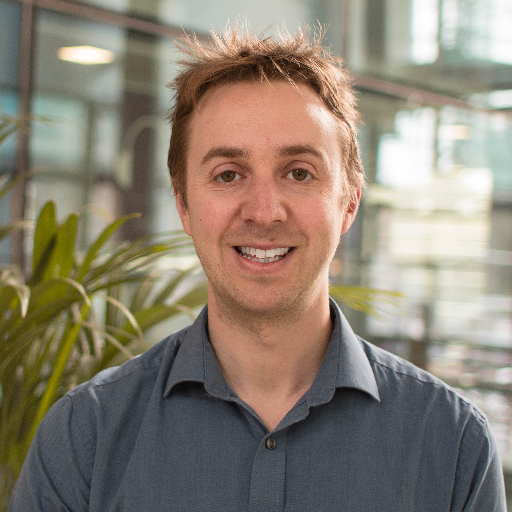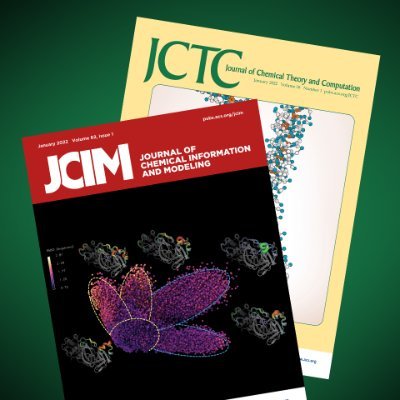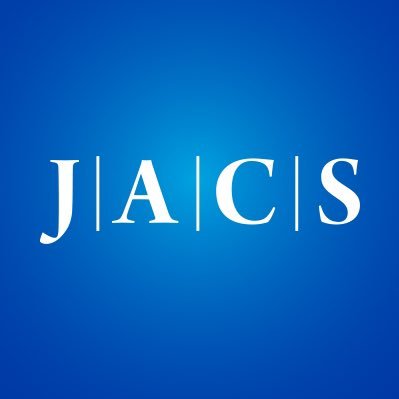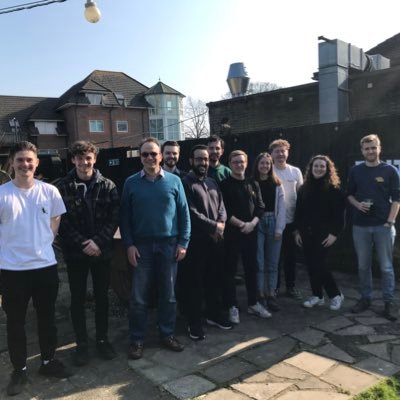
Cole Group
@ColeGroupNCL
Followers
3K
Following
3K
Media
213
Statuses
1K
We are a computational research group @UniofNewcastle led by #UKRIFLF Dr Danny Cole specialising in atomistic simulations in medicinal chemistry and biology.
Newcastle Upon Tyne, England
Joined September 2018
Very excited to have taken part in the CACHE2 hit finding challenge. Thank you so much to the organisers and well done to all the participants! We've written up some of our experiences in this blog: https://t.co/iZ01JVJtqx
@ChemistryNCL @SciencesNCL
cole-group.github.io
Recently a team of us from Newcastle University were fortunate enough to enter the second Critical Assessment of Computational Hit-Finding Experiments (CACHE) Challenge. The full team comprised: Ben...
Announcing CACHE2 results! Crowdsourcing and conventional methods did as well as novel ML. Teams started from 4 fragments in the PDB. We tested their predictions and found double-digit µM hits. This is the state-of-the-art. @thesgconline @consciencemeds
https://t.co/Fbut1xK0yQ
1
8
21
📣 Pleased to announce that the second part of our work during my PhD on 3D shape similarity methods is now available in the Proceedings of the Royal Society A! @ColeGroupNCL @ChemistryNCL @NCLMathsStats @MosmedC Code: https://t.co/N2Aew3fuTm Article:
royalsocietypublishing.org
Shape similarity between molecules is a concept used by chemists for virtual screening, with the goal of reducing the cost and duration of drug discovery campaigns. This paper reports an entirely...
2
5
18
CACHE Challenge #2: Targeting the RNA Site of the SARS-CoV-2 Helicase Nsp13 https://t.co/pQ9KN1Y1ys
@r_armstrong_lab @CherylArrowsmi1 @kelly_bachta @ColeGroupNCL @ChemCree @aledmedwards @fayned @KallieFriston @alexanderhilli7 @janhjensen et al. #JCIM Vol65 Issue13 #compchem
pubs.acs.org
AbstractA critical assessment of computational hit-finding experiments (CACHE) challenge was conducted to predict ligands for the SARS-CoV-2 Nsp13 helicase RNA binding site, a highly conserved...
0
8
23
MACE-OFF: Short-Range Transferable Machine Learning Force Fields for Organic Molecules | Journal of the American Chemical Society @Cambridge_Uni
pubs.acs.org
Classical empirical force fields have dominated biomolecular simulations for over 50 years. Although widely used in drug discovery, crystal structure prediction, and biomolecular dynamics, they...
0
4
14
MACE-OFF: Short-Range Transferable Machine Learning Force Fields for Organic Molecules #machinelearning #compchem
pubs.acs.org
Classical empirical force fields have dominated biomolecular simulations for over 50 years. Although widely used in drug discovery, crystal structure prediction, and biomolecular dynamics, they...
0
10
45
SAVE THE DATE: We’re hosting this years annual @ccpbiosim conference in sunny Southampton on the 14th-16th July 2025. Stay tuned on here and at https://t.co/QHTNLyJ45W for more information and announcements coming soon!
0
5
7
Looking to develop an independent research career in the UK? Check out the Newton International Fellowships scheme below. Do get in touch if interested in developing a project related to (classical / machine learning) force fields, or workflows for computer-aided drug discovery
The Royal Society's Newton International Fellowships are now open for applications. These fellowships are for non-UK early career scientists who wish to conduct research in the UK. Find out more, including how to apply: #RSGrants
https://t.co/1t10o2KhYh
0
0
2
Yesterday, after 34+ years of excellence in teaching & research, Dr Julian Knight gave his last organic chemistry lecture at Newcastle. Then this happened...😍 Thanks so much to Julian, and all the staff and students that turned out to wish him well in his retirement! #WeAreNCL
38
133
1K
Want to find out what our former PhD students are up to now? Check out the @MosmedC alumni showcase below, including @rachaelpirie203's move from @ChemistryNCL to @nmsoftware
📣Our Alumni showcase page is now live! Head over to our website to find out what our students did next. Hear from our graduates about their experiences of working in industry & academia, as well as how the CDT prepared them for these next steps! 👇👇👇👇 https://t.co/jGYwWhbHnr
0
2
5
Thanks so much @rachaelpirie203 for coming to speak to our new cohort, I'm sure it was an inspiring session!
Today our new cohort of researchers are attending our Foundations of Science session on RRI to include talks from our Cohort 1 Alumni @rachaelpirie203 and Anju Massey-Brooker from our MoSMed Advisory Board. Looking forward to our student Fraud Squad presentations later too!
0
0
9
I'm very pleased to announce the launch of #OpenADMET -- a new @openmsf project and part of a much larger #Avoidome initiative led by @fraser_lab @jchodera and @srikosuri , and funded by @ARPA_H.
1
12
31
Save the Date: https://t.co/b7xxTKI9ci We are happy to announce the dates for the Free Energy Workshop 2025! Please fill out the above form to register your interest and you will receive all updates concerning registration and abstract submission! #Alchemistry2025
0
8
15
🔓Don't miss recent #OpenAccess work from our Editor-in-Chief, @MikeJWaring and colleagues on analysing the physicochemical properties of oral drugs approved by the FDA from 2000 to 2022, go check it out👀👇 https://t.co/1OVOHGjtAG 📍 @UniofNewcastle @CR_Horizons
pubs.rsc.org
Calculable physicochemical descriptors are a useful guide to assist compound design in medicinal chemistry. It is well established that controlling size, lipophilicity, hydrogen bonding, flexibility...
0
3
4
One Chemistry Nobel Prize (so far) for the list of 2008 Cambridge electronic structure discussion group presenters! 🎉 https://t.co/2L0cY2gOxw
0
0
12
We implement all methods in the Python package RED ("conda install conda-forge::red-molsim", https://t.co/tWIfkeHn1o) and provide a complete workflow to reproduce the work ( https://t.co/hRlBunKNmx). All data are available on Zenodo ( https://t.co/mesQFOgjT0). (5/6)
1
1
7
Do you run molecular simulations? Check out @finlayclrk's preprint on @ChemRxiv to make sure you're not throwing away more data than you need to: #compchem
Interested in automated equilibration detection for molecular simulations? Check out our preprint and accompanying Python package, RED: Manuscript: https://t.co/rS9kmWmEEm Python package: https://t.co/tWIfkeHn1o (1/6)
0
2
23
Welcome to Newcastle! It's a beautiful day for a #NCLvisit, and thank you to everyone who has dropped by to chat to our wonderful volunteers!
1
7
18
Open-source competition finds potential coronavirus drugs: The seven early stage compounds are all freely available. https://t.co/LdC1YB9fEi .
cen.acs.org
The seven early stage compounds are all freely available
0
5
14
Having a great time at #CMS2024! Here are @asma__feriel & Charlie Adams with their posters on de novo design of GALK1 inhibitors and electrostatic potential modelling with machine learning
0
3
17
@CorinWagen @ColeGroupNCL Thanks for the shout out! As @ColeGroupNCL points out you can now use AIMNet2 with #BespokeFit thanks to the QCEngine interface, try installing via `conda install pyaimnet2` and selecting `wb97m-d3` or `b973c` as the method and `aimnet2` as the program.
0
1
6
Thanks for the shout out, will take a look at this paper 👀In terms of NNPs, #BespokeFit is linked up to MolSSI's QCEngine, so can generate reference data with ANI and (since publication) AIMNet2 and MACE-OFF. Should help make these fast enough to be routine!
Worth noting that @joshhorton93 @ColeGroupNCL @jchodera @davidlmobley &c have an open-source Python package for doing this within the OpenForcefield ecosystem ( https://t.co/tnCADcTRkk). It will probably be pretty powerful to integrate these tools with next-gen NNPs...
1
1
9





















